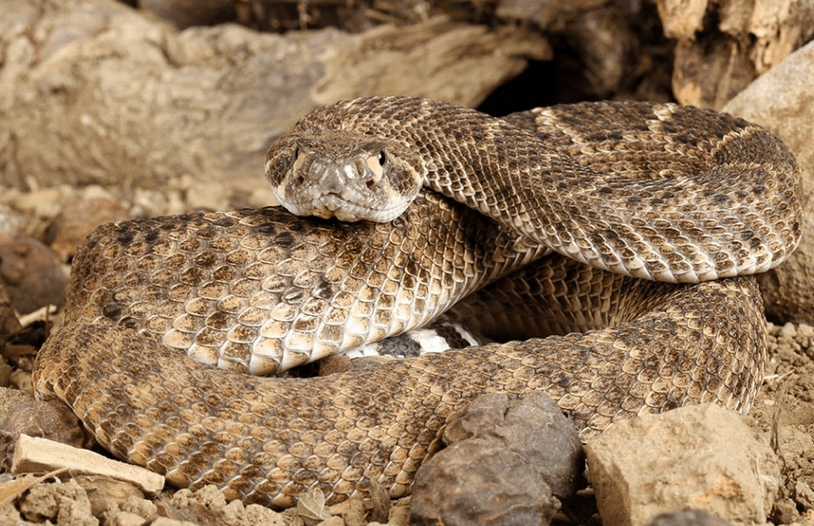It’s summertime, and like it or not, snakes are out. Last year, several news organizations reported an increase in the number of venomous snake bites in Texas, North Carolina, Georgia, California, and Arizona. Rapid urbanization and higher-than-normal amounts of rain were blamed for the spike in bites, especially since they were occurring more frequently in suburban areas. People can encounter snakes while walking trails, camping or just doing summer yard work. In fact, recent encounters with snakes hiding under car hoods and in pool noodles have made the news. So even if you are sheltering in p lace due to COVID-19 and not out recreating much, you may still encounter snakes in and around your own home.
lace due to COVID-19 and not out recreating much, you may still encounter snakes in and around your own home.
Did you know that there are over 3,000 species of snakes on Earth? While not all of them are perilous, per se, certain slithering serpents are extremely dangerous. Common venomous snakes include western diamond-backed rattlesnakes, copperheads and the cottonmouth, also known as the water moccasin. The range of species and likelihood of an encounter differ from region to region and specific locations. For instance, it’s much more likely to see a cottonmouth around bodies of water, like ponds, lakes or creeks, as well as bottomlands that maintain high levels of moisture throughout the seasons. Although it is best to always avoid contact with all snakes, the Western Diamondback Rattlesnake is probably the most feared. Rattlesnakes are unique to the Americas, with at least 32 recognized species living in a multitude of habitats. Though they are icons of the Southwest, rattlers are found in many states across the country. Part of what makes the Diamondback so deadly is its refusal to back down when partaking in a stand-off. While many snakes are venomous but calm, this desert-dwelling critter can be super aggressive when provoked! This viper coils and rattles its tail (you’ve heard the sound) to warn enemies to stay back. When said enemies don’t take the warning seriously, the sassy snake will strike, and its venom packs quite the punch.
Because snakes are cold-blooded, they prefer sun and/or stretching out on warm surfaces like rocks, pavement and other heat-absorbing materials when temperatures are cooler. Just like people! But in the heat of the summer, they prefer shade, especially from the midday sun. “Contrary to popular belief,” explains a professor of biological sciences at California Polytechnic State University, “rattlers don’t like to be out when it’s really hot. When the temperatures hit triple digits and the monsoon comes, people aren’t the only ones seeking relief. Snakes will hide under something on the ground in people’s yards to get away from that extreme heat.”
What a lot of people don’t know is that venomous snakes typically do not want to use their venom as a defense. They usually give warnings – like rattlesnakes rattling – before they strike. The Texas Department of Health Services reported that half the reported bites by venomous snakes were “dry,” meaning no venom was injected into the victim. Of course victims don’t know that at the time so always seek immediate medical help. A snake strikes because it views you as a threat. Producing venom is an energetically costly process, and they only have so much. If they use it, they must make more to hunt for food, and they have to work for every single meal, so striking to defend themselves is something they would rather avoid.
You can’t get rid of snakes, nor should you necessarily want to. Rattlesnakes can actually do a service to homeowners near the foundation by eating rodents. Learn how to live with them so you, your kids, your pets and the snakes can all be safe. They are integral to ecosystems because they eat insects and rodents you don’t want around the house, in your garage, our outbuildings. Just leave the animal alone if you see one. The Phoenix Herpetological Sanctuary says an estimated 80 to 90 percent of rattlesnake bites occur when untrained people try to move or harm the snake. It’s best to give them plenty of room and let them go on their way. There are no chemical repellants proven to deter snakes, so removing potential shelter and food sources is the best way to NOT attract snakes. Cutting the grass, removing brush and debris, and trimming the lower branches on bushes and trees will go a long way in reducing the places a snake might want to hide. Reducing hiding spots for snakes will also reduce hiding spots for the prey they seek, like rats and mice.
The best advice this summer is as lockdowns are lifted and people get out and about is to be alert and check your surroundings. Wear appropriate protection such as snake gaiters, snake proof boots, or snake chaps, and never purposely disturb or touch a snake.
In the event you are bitten by a snake:
- Remain calm, and move away from the snake.
- Immediately call 9-1-1 or send someone for help and safely transport the snake bite victim to the nearest emergency medical facility for treatment.
- Remove wristwatches, rings or anything constrictive.
- Gently wash the area with soap and water. Keep the bite at or below heart level.
- Try to remember what the snake looked like so you can tell the emergency room doctor (but do not attempt to kill or catch it!)
- Do not cut open the wound and try to suck out the venom. Do not use a tourniquet - this will restrict or cut off blood flow and the limb may be lost.